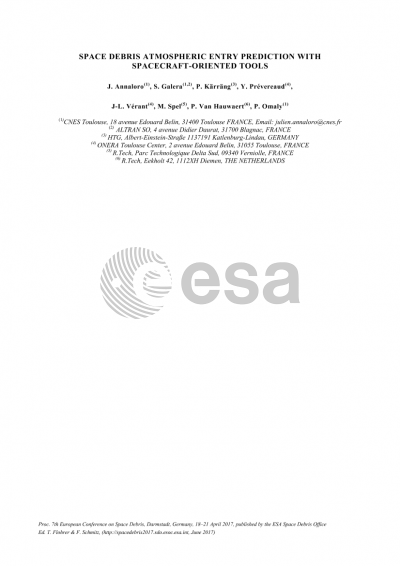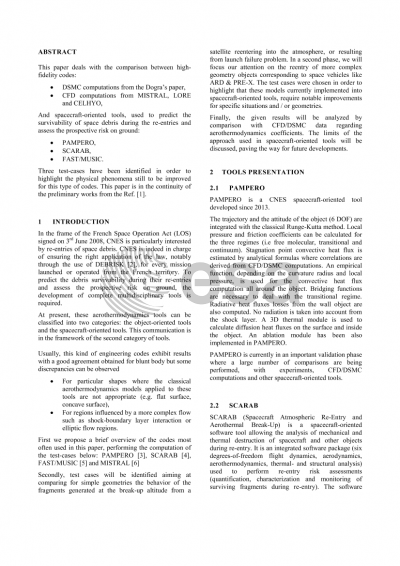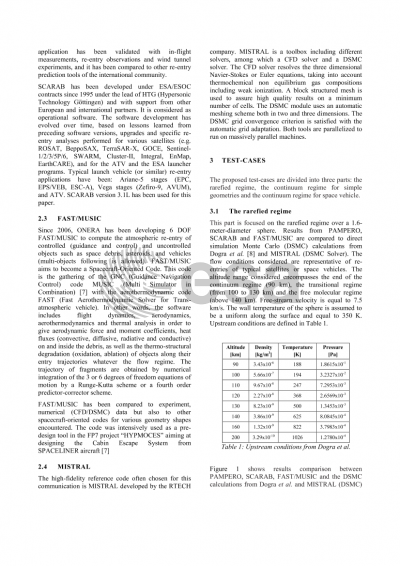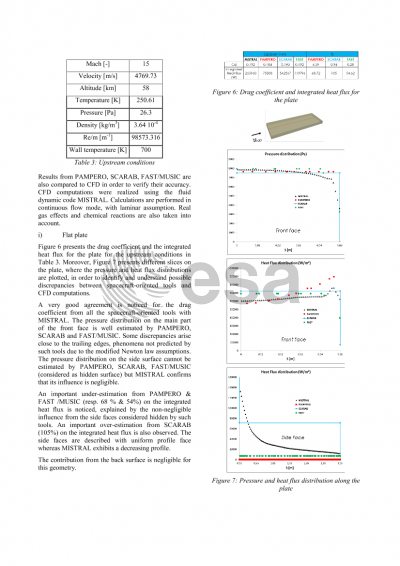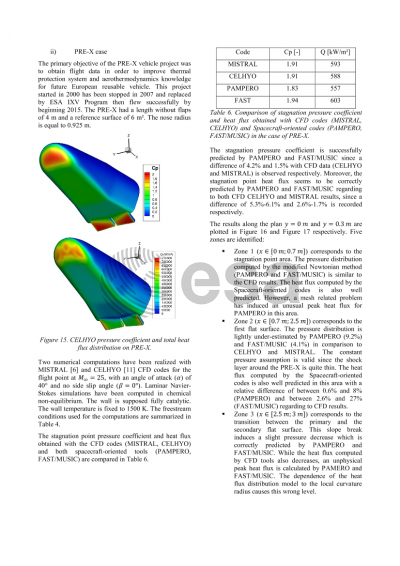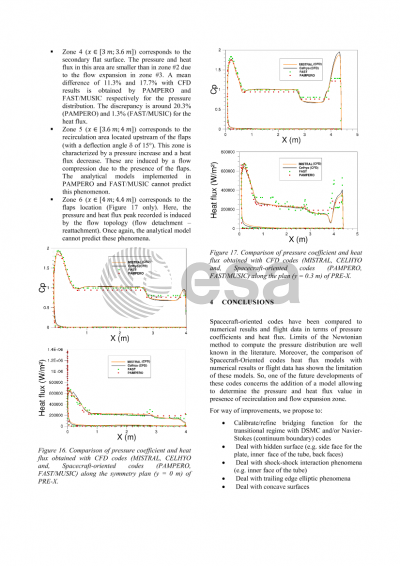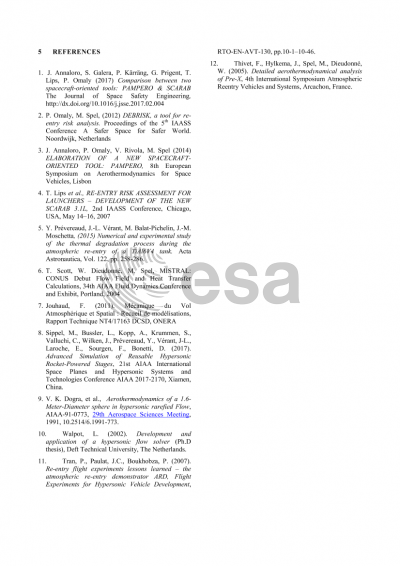Document details

Abstract
In the frame of the French Space Operation Act (LOS) signed on 3rd June 2008, CNES is particularly interested by re-entries of space debris. CNES is indeed in charge of ensuring the right application of the law by 2012, for every mission launched or operated from the French territory. To predict the debris survivability during their re-entries and assess the prospective risk on ground, the development of a complete multidisciplinary tool is required.
At present, these aerothermodynamics tools can be classified into two categories: the object-oriented tools and the spacecraft-oriented tools. This communication is in the framework of the second category of tools. Spacecraft-oriented tools aim to simulate as real as possible the complete geometry of a spacecraft. 6 DOF model is used to obtain the position and attitude all along the trajectory. Local calculation aerothermodynamics parameters at the wall (pressure coefficient, convective/radiative heat flux, temperature …) strongly depend on the free-stream conditions. 3D heat transfer model is used for ablation analysis
Usually, engineering codes exhibit results with a good agreement obtained in regions such as nose but some discrepancies can be observed 1- for particular shapes where the classical aerothermodynamics models applied to spacecraft-oriented tools are irrelevant/inaccurate (e.g. flat surface, concave surface) 2- for regions influenced by a more complex flow such as shock-boundary layer interaction or elliptic flow regions. It will be proposed an overview of the models developed/selected in FAST/MUSIC [1], PAMPERO [2] and SCARAB [3] addressing pressure, heating mechanisms and ablation in hypersonic regime for free-molecular, transitional and continuum flows.
Test cases will be identified aiming at comparing for simple geometries the behavior of the fragments generated at the break-up altitude from a satellite reentering into the atmosphere, or resulting from launch failure problem. On the other hand, we will focus our attention on the reentry of more complex geometry objects corresponding to space vehicles like ATV, ARD, etc.
Then, the given results will be analyzed by comparison with CFD/DSMC data regarding aerothermodynamics. The high-fidelity reference code chosen for this communication is MISTRAL [4] developed by the RTECH society. MISTRAL is a toolbox including different solvers, among which a CFD solver and a DSMC solver. The CFD solver resolves the three dimensional Navier-Stokes or Euler equations, taking into account thermochemical non equilibrium gas compositions including weak ionization. A block structured mesh is used to assure high quality results on a minimum number of cells. The DSMC module uses an automatic meshing scheme. Both tools are parallelized to run on massively parallel machines.
Finally, the limits of the approach used in spacecraft-oriented tools will be discussed, opening the way for future developments.
[1] Y. Prévereaud, Y et al., (2015) Numerical and experimental study of the thermal degradation process during the atmospheric re-entry of a TiAl6V4 tank. Acta Astronautica, Vol. 122, pp. 258-286.
[2] J. Annaloro et al., ELABORATION OF A NEW SPACECRAFT-ORIENTED TOOL: PAMPERO, 8th European Symposium on Aerothermodynamics for Space Vehicles, Lisbon, 2014
[3] T. Lips et al., RE-ENTRY RISK ASSESSMENT FOR LAUNCHERS – DEVELOPMENT OF THE NEW SCARAB 3.1L, 2nd IAASS Conference, Chicago, USA, May 14–16, 2007
[4] T. SCOTT, W. DIEUDONNE, M. SPEL, MISTRAL: CONUS Debut Flow Field and Heat Transfer Calculations, 34th AIAA Fluid Dynamics Conference and Exhibit, Portland, 2004
Preview
